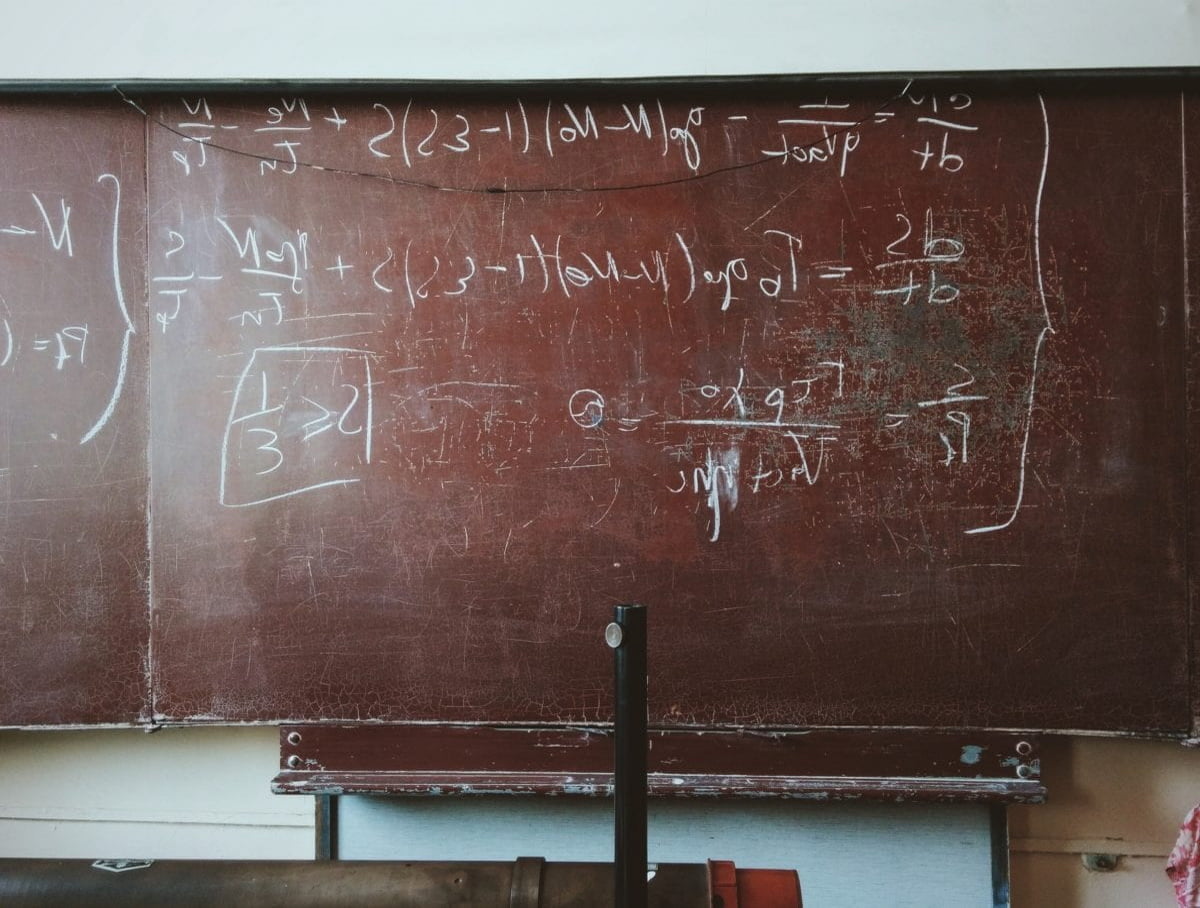There is a story on the Internet about an American student who was once late for a class and, mistaking two open mathematical problems written on the board for homework, solved them. We checked to see if this happened.
Here's what a popular online text says: “In 1939, 25-year-old mathematician George Danzig was studying at the University of California. Once he was 20 minutes late for a couple according to statistics. He quietly entered, sat down at his desk and turned his head, trying to understand what he had missed. The conditions of two problems were written on the board. “Aha,” thought Danzig, “clear, this is apparently homework for the next class.” The student copied the problems into a notebook and began to listen to the professor.
At home, he regretted three times that he was late for a couple. The tasks were really difficult. Danzig thought he had probably missed something important to their decision. However, there was nothing to be done. After several days of hard work, he finally solved these problems. Satisfied, he dropped in to the professor and gave him the notebook.
The professor - his name was Jerzy Neyman, if anyone is interested - absentmindedly accepted the task: yes, they say, okay. Somehow he couldn’t immediately remember that he hadn’t asked the students anything like that. When, after some time, he finally looked at what the student had brought him, his eyes just popped out of his head. He remembered that at the beginning of one of the lectures he actually told students the conditions of these two problems. Two unsolvable problems! Two problems that not only the professor himself, but also other outstanding minds of that time could not solve. However, Danzig simply listened to the part of the lecture that spoke about the intractability of these problems. And I solved them.
Sometimes you can do the impossible. Unless you convince yourself that this impossible is impossible.”
This motivational story is quite popular on social networks such as Facebook (many hundreds of reposts), "VKontakte» And Telegram, as well as on the website anekdot.ru. Famous LJ blogger mi3ch adds that it was used in the movie Good Will Hunting. In the West, history often takes the form urban legend without mentioning the name of the mathematician.
Who are the people involved in this story? A native of Bessarabia and a specialist in mathematical statistics, professor Jerzy Neumann (not to be confused with another prominent emigrant mathematician John von Neumann) actually worked at the University of California since 1938, and since 1955 he headed the corresponding department. Later, according to the Encyclopedia Britannica, he, together with his graduates, organized a real world center for the study of this branch of mathematics in the city of Berkeley.
No less famous is George Danzig - creator of an algorithm for solving problems using the simplex method and one of the founders of linear programming. The first thing you might notice when reading our story is that it refers to him as a 25-year-old student. In fact, at the age of 22, he received a bachelor's degree in mathematics and physics from the University of Maryland, a year later he received a master's degree from the University of Michigan, and even managed to work for two years at the US Bureau of Labor Statistics. To Neumann he asked in 1939, already as part of work on his doctorate.
What happened next? Almost half a century later, in 1986, George Bernard Danzig himself spoke about this in interview College Mathematics Journal. This is what he said: “This happened because one day in my first year at Berkeley I was late for a Neumann lecture. There were two problems on the board that I assumed were homework. I rewrote them. A few days later, I apologized to Neumann for taking so long to do my homework; the tasks were a little more difficult than usual. I asked if he needed my decisions. He told me to throw them on the table. I did this reluctantly: his desk was littered with so many papers that I feared I would lose my homework forever. About six weeks later, on a Sunday morning, around 8 a.m., [my wife] Ann and I were awakened by a knock on the front door. It was Neumann. He ran in with papers in his hands, all excited: “I just wrote the foreword to one of your articles. Read it so that I can immediately send the article for publication.” For a minute I couldn't understand what he was talking about. Long story short, the board problems I solved thinking they were homework turned out to be two known unsolved statistics problems. I immediately suspected that something was wrong with them. A year later, when I became concerned about the topic of my dissertation, Neumann just shrugged, telling me to put both problems in a folder and he would accept them as my dissertation.”
Shortly before the interview Danzig found out about how his story has become an urban legend: “The other day, during my morning walk, Don Knuth (the famous programming theorist) called out to me Donald Knuth. — Approx. aut.), passing by on his bicycle. He's my colleague at Stanford. He stopped and said, "Hi George, I was in Indiana recently and heard a sermon about you at church. Did you know that you were influencing Christians in the Midwest?" I looked at him, amazed. “After the sermon,” he continued, “the priest came up and asked me if I knew George Dantzig from Stanford, because that was the name of the man about whom his sermon was.”
The origin of this sermon is connected with another Lutheran minister, Rev. Schuler (Danzig spelling; in fact, the surname is spelled Schuller. - Author's note) from Crystal Cathedral in Los Angeles. He shared his ideas about positive thinking with me, and I told him my story about homework and dissertation. A few months later, I received a letter from him asking for permission to include my story in a book he was writing about the power of positive thinking. The version published by Shuler contains a number of distortions and exaggerations, but is generally correct. The moral of his sermon was: If I had known that this was not homework, but two known unsolved problems in statistics, I probably would not have thought positively, would have become discouraged, and would never have solved them.”
Really, the story of George Danzig, which the famous televangelist Robert Schuller told in his book, contains many significant inaccuracies. In particular, at Schuller, Danzig was late not for a regular lecture, but for a final exam, and he solved eight ordinary problems on the spot, and asked for two unsolvable ones (he didn’t know about it yet) to be given to him at home. Moreover, in this version, Danzig, for some reason assigned to the physics department at Stanford, coped with only one of two difficult problems, to which the nameless professor allegedly replied: “Even Einstein could not reveal their secret.” After the 1986 interview, the author’s version of the Danzig case gained no less popularity and to some extent supplanted the preacher’s version: for example, it is this version that can be found these days in a number of motivational books. Both versions of the legend are mentioned in "Encyclopedia of American Folklore". And, indeed, counts, that the plot of a popular film is based on it "Good Will Hunting" starring Matt Damon.
Is it true
Read on topic:
1. The Unsolvable Math Problem
If you find a spelling or grammatical error, please let us know by highlighting the error text and clicking Ctrl+Enter.







